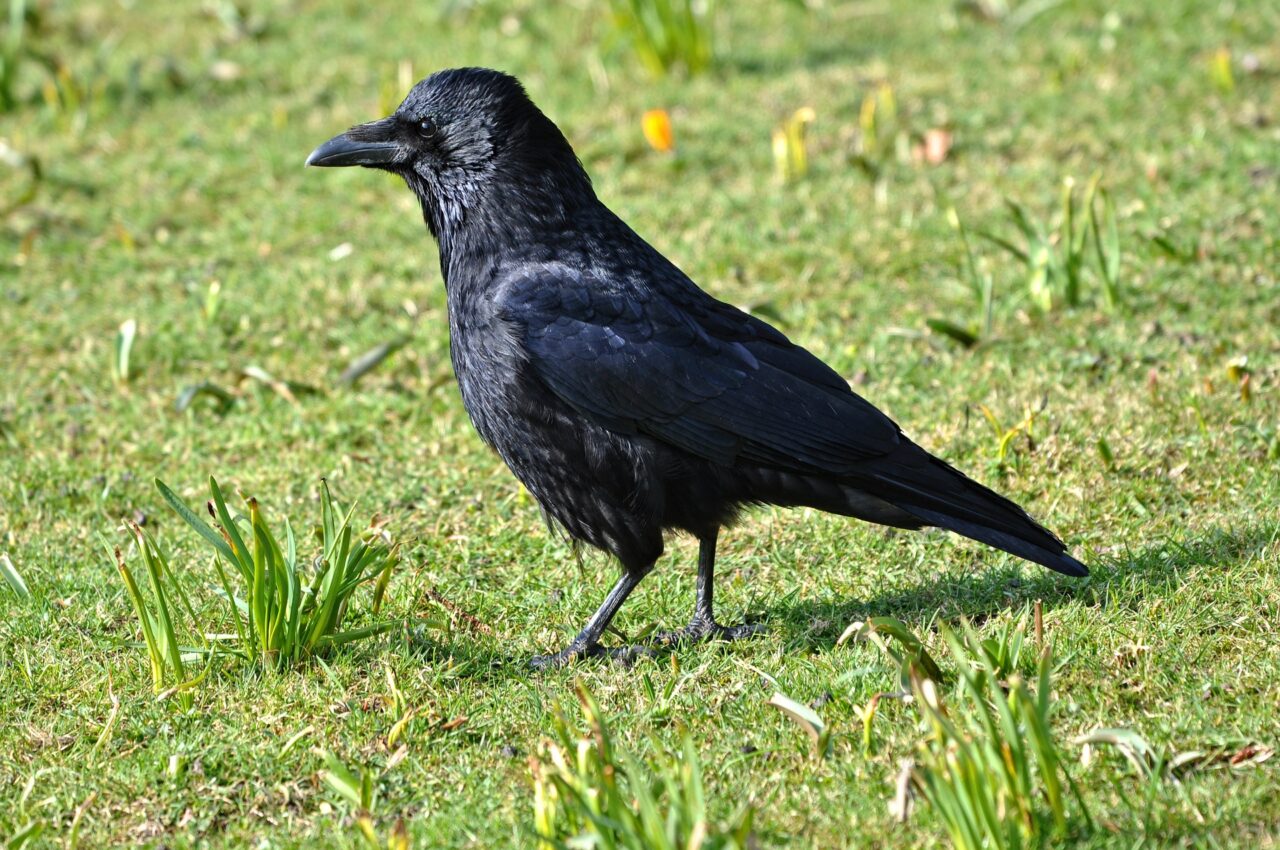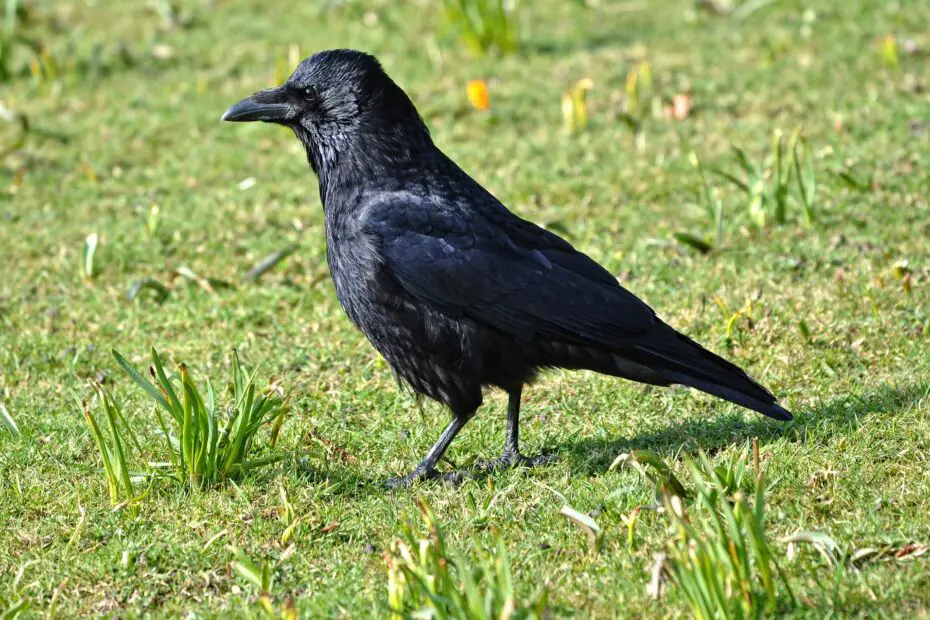The crow does not have too good a reputation. Nevertheless, we are convinced that the more you learn about this blackjack, the better you will learn to appreciate it. Crows eat a variety of things.
The best chance of seeing it you have where food is present. For example, go look in a freshly plowed field and note the following characteristics:
-larger than a jackdaw, smaller than a raven
-pitch black feathers, in summer with a bluish metallic sheen
-Solid black bill
-rounded tail when flying
You may also want to read about the grey heron.
What do crows eat?
Crows eat in summer on insects, larvae and benthic invertebrates. They pick these up as they walk across low vegetated plains. In the colder seasons, they switch to grain, plant remains and the occasional mouse. They are also open to other easy food sources, such as cadavers, garbage containers and street trash. Occasionally they dare to raid someone else’s nest. Crows are very intelligent and use their brains to get at food. Crows eat a variety of things they can find.
For example, there have been several cases of crows dropping walnuts on the road surface in hopes that the shell will break. Occasionally they succeed, often they don’t. Sometimes they get lucky and a car does the hard work for them. They then retrieve the loot when the traffic comes to a halt again.

Habitat of the crow
The crow breeds from southern Spain and Portugal to eastern Germany and northwestern Austria, including Great Britain. In Belgium, the large, black bird is found almost everywhere; there is no biotope where it does not feel at home. Even in cities it regularly turns up to look for food.
Crow love
Crows live in territorial pairs that take protecting their own territory very seriously. Only individuals in good condition can fulfill this task year-round. Young birds, as well as breeding birds with poorer condition, have no territory of their own and roam around in bachelor groups.
In late March or early April, the crow pair begins to build a nest high in a tree. After about five days, they begin their single clutch, which consists of 4 or 5 blue-brown speckled eggs. The female takes on most of the nesting task, while the male provides food. The young peck out of the egg after about 3 weeks and are ready to fledge after 4 to 6 weeks. They then stay around their parents for more than a month and a half.
Crows are socially monogamous. That is, they make a lifelong commitment and can count on each other every year. Yet only 82% of the young in a nest belong to their own male. So every now and then, the faithful bird rides a crooked skate. Often, the crow pair receives help in raising their young from genetically related males who delay their own reproduction a bit more.
Relationship with humans
Crows do not have a good image and are known, especially by farmers, to cause damage. At newly germinated seed, they work long rows of seedlings in one by one. They also dare to peck through the plastic of silage.
When nuisance is caused by crows, the only motto that counts is: prevention is better than cure. Exterminating a crow (a practice still often employed) makes room for a new crow, so the damage usually does not stay away for long. This is why silage is covered not only with plastic, but also with a thick layer of soil, for example. Hanging up a dead crow is futile effort. This intelligent bird is hardly deterred by it!
Crows also have their good sides, which are often overlooked. With their work as scavengers, they keep our streets clean of animal traffic victims and prevent the spread of diseases such as botulism. In addition, the large bird can move a lot of insects that we (at least in some cases) would rather lose than get rid of. For example, they love leatherjackets, which can also cause a lot of agricultural damage. So crows can also be useful in your garden.
Did you know that the crow …
is about the same size as the even black rook? The latter has a bald spot at the base of its bill, making it easy to tell the two species apart.
sometimes targets window glass in which it sees its own reflection? This rage can assume large proportions, resulting in glass damage. Crows that want to compete with their own reflection direct their aggression at window wipers and window frames, among other things.
